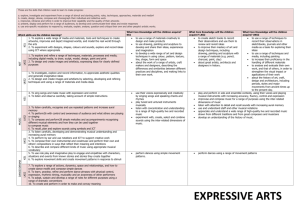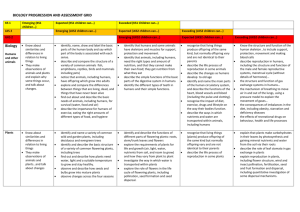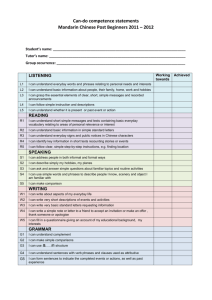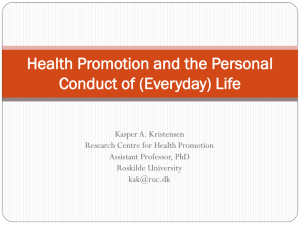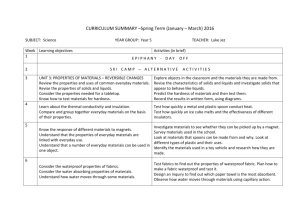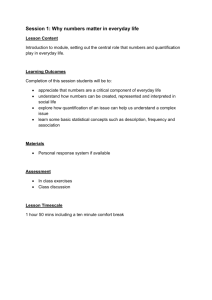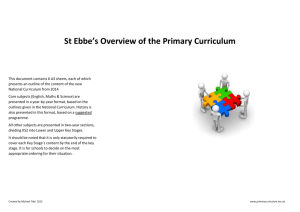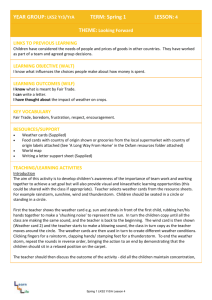Chemistry
advertisement
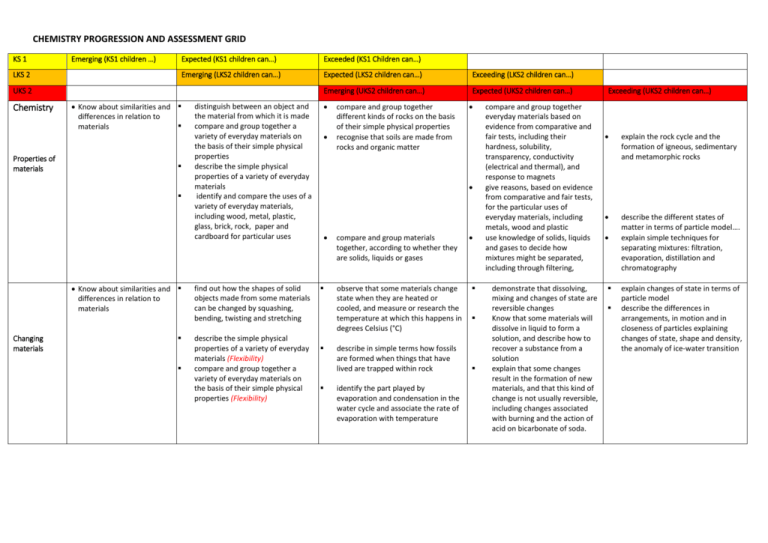
CHEMISTRY PROGRESSION AND ASSESSMENT GRID KS 1 LKS 2 Emerging (KS1 children …) Expected (KS1 children can…) Exceeded (KS1 Children can…) Emerging (LKS2 children can…) Expected (LKS2 children can…) Exceeding (LKS2 children can…) Emerging (UKS2 children can…) Expected (UKS2 children can…) UKS 2 Chemistry Properties of materials Know about similarities and differences in relation to materials Know about similarities and differences in relation to materials Changing materials distinguish between an object and the material from which it is made compare and group together a variety of everyday materials on the basis of their simple physical properties describe the simple physical properties of a variety of everyday materials identify and compare the uses of a variety of everyday materials, including wood, metal, plastic, glass, brick, rock, paper and cardboard for particular uses find out how the shapes of solid objects made from some materials can be changed by squashing, bending, twisting and stretching describe the simple physical properties of a variety of everyday materials (Flexibility) compare and group together a variety of everyday materials on the basis of their simple physical properties (Flexibility) compare and group together different kinds of rocks on the basis of their simple physical properties recognise that soils are made from rocks and organic matter compare and group materials together, according to whether they are solids, liquids or gases observe that some materials change state when they are heated or cooled, and measure or research the temperature at which this happens in degrees Celsius (°C) describe in simple terms how fossils are formed when things that have lived are trapped within rock identify the part played by evaporation and condensation in the water cycle and associate the rate of evaporation with temperature compare and group together everyday materials based on evidence from comparative and fair tests, including their hardness, solubility, transparency, conductivity (electrical and thermal), and response to magnets give reasons, based on evidence from comparative and fair tests, for the particular uses of everyday materials, including metals, wood and plastic use knowledge of solids, liquids and gases to decide how mixtures might be separated, including through filtering, demonstrate that dissolving, mixing and changes of state are reversible changes Know that some materials will dissolve in liquid to form a solution, and describe how to recover a substance from a solution explain that some changes result in the formation of new materials, and that this kind of change is not usually reversible, including changes associated with burning and the action of acid on bicarbonate of soda. Exceeding (UKS2 children can…) explain the rock cycle and the formation of igneous, sedimentary and metamorphic rocks describe the different states of matter in terms of particle model…. explain simple techniques for separating mixtures: filtration, evaporation, distillation and chromatography explain changes of state in terms of particle model describe the differences in arrangements, in motion and in closeness of particles explaining changes of state, shape and density, the anomaly of ice-water transition
